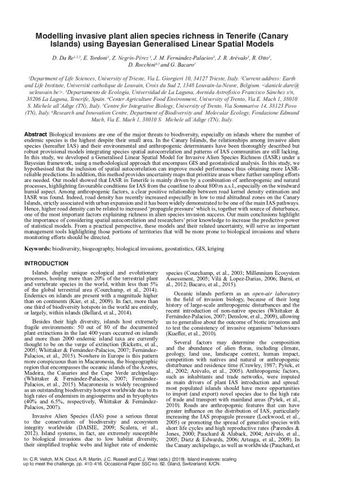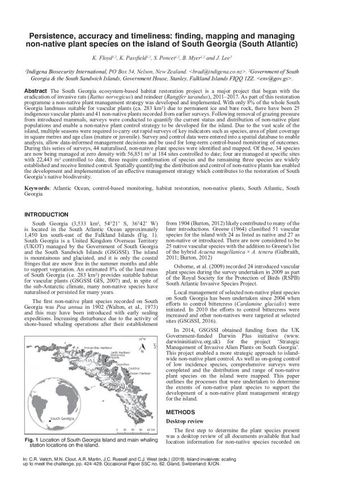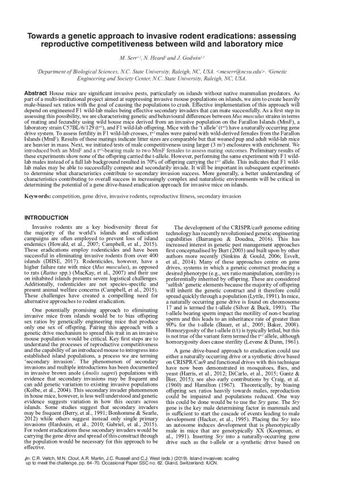Prevention, Eradication and Containment of Invasive Species: Illustrations from Hawaii
- Description:
- Invasive species change ecosystems and the economic services such ecosystems provide. Optimal policy will minimize the expected damages and costs of prevention and control. We seek to explain policy outcomes as a function of biological and economic factors, using the case of Hawaii to illustrate. First, we consider an existing invasion, Miconia calvescens, a plant with the potential to reduce biodiversity, soil cover, and water availability. We then examine an imminent threat, the potential arrival of the Brown Treesnake (Boiga irregularis). The arrival of the snake to Guam has led to native bird extirpations, power outages, and health costs.
- Collections:
- Secretariat of the Pacific Regional Environment Programme (SPREP)
- Publisher:
- Published by authors
- Content partner:
- Secretariat of the Pacific Regional Environment Programme (SPREP)
- Availability:
- Not specified
-
Copyright status: All rights reservedFind out more about what you are able to do with this itemThis item is all rights reserved, with means you'll have to get permission from Secretariat of the Pacific Regional Environment Programme (SPREP) before using it. For more information, please see our use and reuse page.What can I do with this item?Non-infringing useNZ copyright law does not prevent every use of a copyright work, and this item may be hosted by an international institute or organisation. You should consider what you can and cannot do with a copyright work.No sharingYou may not copy and/or share this item with others without further permission. This includes posting it on your blog, using it in a presentation, or any other public use.No modifyingYou are not allowed to adapt or remix this item into any other works.No commercial useYou may not use this item commercially.
Related items
Welcome and warm Pasifik greetings
The information on this site has been gathered from our content partners.
The names, terms, and labels that we present on the site may contain images or voices of deceased persons and may also reflect the bias, norms, and perspective of the period of time in which they were created. We accept that these may not be appropriate today.
If you have any concerns or questions about an item, please contact us.


